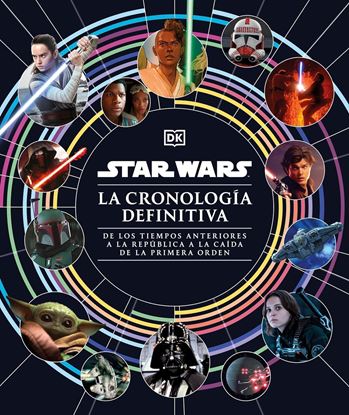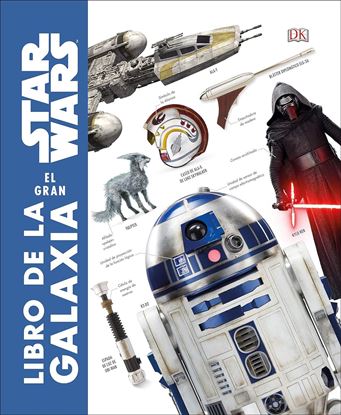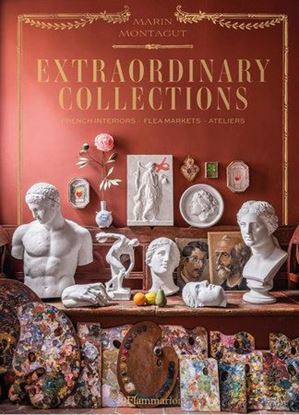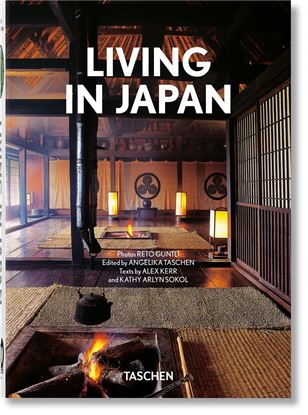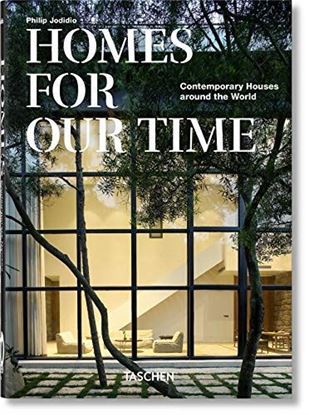

STAR WARS. LA CRONOLOGIA DEFINITIVA
Un compañero indispensable para todos los seguidores de Star Wars, este libro muestra líneas de tiempo visuales que describen cronológicamente eventos, personajes y acontecimientos clave.
Rastrea conflictos cruciales, sigue la espada láser de Skywalker a medida que pasa de generación en generación, sé testigo de la evolución del icónico caza TIE a lo largo de diferentes épocas, indaga enlos planes de la Estrella de la Muerte a lo largo de los años y descubre múltiples líneas de tiempo que explican importantes batallas.
2,300
1,725
STAR WARS. EL GRAN LIBRO DE LA GALAXIA
Repleto de información y con más de 1500 imágenes alucinantes, este libro muestra todos los personajes, principales y secundarios, incluyendo a la Princesa Leia y a Luke Skywalker, además del resto de criaturas, vehículos, armas, accesorios y tecnologías con detalles sin igual.
La enorme cantidad de información visual que se nos ha vislumbrado en las películas de Star Wars ahora en formato de lectura. Detente a observar en detalle cómo eran los héroes y villanos que pilotaban naves estelares llenas de instrumentos; alienígenas con armas únicas, e historias de varias culturas reflejadas en la arquitectura de muchos mundos.
Han pasado muchas cosas desde la publicación del primer diccionario visual de Star Wars, y esta guía revisada y ampliada arroja luz incluso sobre más detalles de esa galaxia. La República, los Separatistas, la Orden Jedi, los Sith, el Imperio, la Alianza Rebelde, la Nueva República, la Primera Orden, la Resistencia, las guerras de las galaxias, gobiernos, líderes e imperios; todo ello explicado en este gran diccionario visual de Star Wars.
Además, este libro de Star Wars está organizado por películas y esta edición actualizada incluye las historias y personajes de Star Wars El Despertar de la Fuerza y Star Wars Los últimos Jedi.
Star Wars. El gran libro de la galaxia es el regalo ideal para cualquier fan de la saga Star Wars, desde niños de 12 años hasta adultos interesados en conocer todos los detalles que hacen del universo Star Wars algo tan especial.
2,300
1,725
EXTRAORDINARY COLLECTIONS
French artist, designer, and talented antique hunter Marin Montagut celebrates the joy of collecting everything from textiles to barware to architectural details, taking readers inside a dozen private homes, flea markets, and unusual ateliers to discover the most whimsical treasure troves in France. From a film prop house’s array of leather sporting goods and playing cards to a travel buff’s vintage maps and globes, and from a sculpture studio’s Grecian plaster casts to an amateur designer’s spiral staircase models, and from Montagut’s own wonder wall assemblages to a cook’s haven filled with porcelain dessert molds and copper pots—objects, when presented together as a series, create unforgettable interiors that radiate charm. Inspiration comes in repetition: wooden zigzag rulers with engraved numbers aligned on a wall in a herringbone pattern create an artful space. The spare wooden forms of capipotes—devotional statues used in religious processions, their eyes turned heavenward in ecstasy—and silver ex-votos can be the point of departure for the theme of an entire room. Montagut’s mood boards for each chapter provide endless ideas for the home.
2,300
1,725
BARBIE. CELEBRACION DE UN ICONO
La obra más completa sobre la muñeca más famosa del mundo.
La primera historia oficial de un icono amado en todo el mundo: Barbie, mucho más que una muñeca.
Barbie es Moda. Barbie es Arte. Barbie es el símbolo de la mujer emancipada de todas las culturas y países, cada vez más inclusiva y atenta a cuestiones sociales y globales, en consonancia con su lema: "Se lo que quieras ser", que resuena cada vez más actual. Nacida en 1959, hace 65 años, pero siempre joven y moderna gracias a sus múltiples cambios de estilo y de fisonomía, Barbie es una criatura caleidoscópica y un verdadero icono pop: creadora de tendencias, top model y musa inspiradora de innumerables artistas. Este libro te ofrece la obra completa sobre la muñeca más famosa del mundo.
2,300
1,725
LIVING IN JAPAN (40) (INT)
So rich and unique is traditional Japanese architecture that it’s nearly impossible to improve upon. Yet contemporary Japanese designers and architects keep finding fresh approaches to refurbish and take inspiration from the ways of old. Whether it’s a pristinely preserved traditional house or a sleek modern apartment, the best Japanese homes share a love of cleverly designed spaces and warm materials like wood, brick, and bamboo.
From a thatched roof farmhouse occupied by a Zen priest to Tadao Ando’s experimental 4x4 House, from Shigeru Ban’s conceptual Shutter House to a beautiful domestic homage to bamboo, this elegant compendium traverses the multifaceted landscape of Japanese living today.
Enriched by 170 brand new, unpublished photographs, this edition takes you on breathtaking journey through the Land of the Rising Sun―complete with a list of addresses, should you wish to undertake this journey to Japan’s most fascinating inns and homes yourself. An insightful glossary of key terms, such as tatami, shoji, and noren, will also help you come to grips with all elements of Japan’s unique aesthetic of Eastern minimalism.
2,300
1,725
HOMES FOR OUR TIME (ING) (40 ANIV.)
Across small cottages and lavish villas, beach houses and forest refuges, discover the world’s finest crop of new homes. This cutting-edge global digest features such talents as Shigeru Ban and Marcio Kogan alongside up-and-coming names like Aires Mateus, Xu Fu-Min, Vo Trong Nghia, Desai Chia, and Shunri Nishizawa. Here, there are homes in Australia and New Zealand, from China and Vietnam, in the United States and Mexico, and on to less expected places like Ecuador and Costa Rica. The result is a sweeping survey of the contemporary house and a revelation that homes across the globe may have more in common than expected.
Among guava trees and abandoned forts in Western India is a sanctuary designed for and by Kamal Malik of Malik Architecture. The House of Three Streams is a sprawling spectacle with high ceilings, verandas, and pavilions, perched atop a ridge overlooking two ravines. A medley of steel, glass, wood, and stone, the house weaves along the contour of the landscape, almost as an extension of the forest. Encina House by Aranguren & Gallegos, an elegant, sloping structure reminiscent of a gazebo, similarly inhabits its surrounding vista. Ensconced in a pine forest north of Madrid, the lower level is embedded in rock and connected to the upper by a natural stone wall. Shinichi Ogawa’s Seaside House is an immaculate two-story minimalist marvel in Kanagawa that overlooks the Pacific. Its living area spills onto a cantilevered terrace and infinity pool, almost dissolving into the ocean as one seamless entity. In Vietnam, Shunri Nishizawa’s House in Chau Doc exudes tropical sophistication with exposed timber beams, woven bamboo, plants, concrete panels, and inner balconies and terraces. Its corrugated iron panels act as moveable walls and shutters, ushering in views of surrounding rice fields.
2,300
1,725


